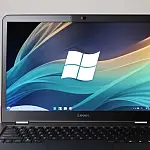How to Read and Reset Honda Check Engine Light CodesIf your car develops a fault on board diagnostics light up the check engine light. This guide shows you how to find out what the problem is.
All car models from all manufacturers since 1996 are equipped with an On-Board Diagnostic system (ODB) which illuminates a malfunction or check engine light on the dash. You can read codes from this light to determine the cause of the error. This facility is built into the Primary Control Module (PCM) and is designed to alert the driver to a system component fault. Some faults may result in higher than normal emissions of harmful exhaust/fuel vapour gases, or they could signal a more serious problem. Either way, the car's engine needs attention. Reading the check engine light codes will speed up the engine management troubleshooting procedure.
Should an engine management component fail, the incorrect (or implausible) signal is recognised by the PCM, which stores a Diagnostic Trouble Code (DTC), and where appropriate, illuminates the Malfunction Indicator Light (MIL)/Check Engine Light (CEL) in the instrument cluster.
To retrieve any stored DTCs, either a fault code reader must be connected to the vehicle's data link connector (located above the Service Check Connector), or read from the MIL in the instrument cluster.
Reading the Check Engine Light on Honda Civic's, Accord
These instructions work for Honda Civic, Accord and I believe Preludes between 1992 and 2000.

The service check connector (2-pin) is located under the dashboard, above the passenger side kick panel. By default, it is inserted into a green rubber housing. For 92-95 models it is grey, for 96-00 models its blue. The codes can be read by bridging the two pins in the service connector and reading the MIL on the instrument cluster (all models). Vehicles 2000 onwards are fitted with a 16-pin diagnostic behind the centre console on the passenger side. A fault code reader is required to retrieve or clear codes via this connector.

To view any DTCs stored in the PCM memory (without a code reader), fit a bridging wire into the service check connector then turn the ignition switch to the ON position. If any codes are present, they will blink a sequence in the MIL to indicate a system or component failure.
The MIL will blink longer to represent the first digit and then will blink short for the second (for example 1 long and 6 short would be code 16). If the system has more than one problem, the codes will be displayed in sequence, there will be a pause, and then the codes will repeat.
When the PCM sets DTC, the MIL will come on and the trouble code will be stored in the memory. The trouble code will stay in the PCM until the voltage to the PCM is interrupted. To clear the memory, remove the BACK-UP fuse from the fuse relay box located in the engine compartment for at least ten seconds. NOTE - This will also clear any radio presets/codes.
Resetting the Check Engine Light and Clear Codes
Once you have diagnosed and fixed the problem you need to reset the Check Engine Light to clear the codes stored in the PCM and prevent the check engine light from staying lit. This can be done by pulling the ECU memory fuse from the fuse box in the engine bay, waiting a few minutes and putting it back in. On my Civic it is the FI ECU 7.5A fuse but check your owner's book or workshop manual. You can also disconnect the battery for a few minutes.
Honda Civic Diagnostic Trouble Codes Table
| Flashes | Cause |
|---|---|
| 1 | O2A - Oxygen sensor #1 |
| 2 | O2B - Oxygen sensor #2 |
| 3 | MAP - manifold absolute pressure sensor |
| 4 | CKP - crank position sensor |
| 5 | MAP - manifold absolute pressure sensor |
| 6 | ECT - water temperature sensor |
| 7 | TPS - throttle position sensor |
| 8 | TDC - top dead centre sensor |
| 9 | CYP - cylinder sensor |
| 10 | IAT - intake air temperature sensor |
| 12 | EGR - exhaust gas recirculation lift valve |
| 13 | BARO - atmospheric pressure sensor |
| 14 | IAC (EACV) - idle air control valve |
| 15 | Ignition output signal |
| 16 | Fuel injectors |
| 17 | VSS - speed sensor |
| 19 | Automatic transmission lockup control valve |
| 20 | Electrical load detector |
| 21 | VTEC spool solenoid valve |
| 22 | VTEC pressure valve |
| 23 | Knock sensor |
| 30 | Automatic transmission A signal |
| 31 | Automatic transmission B signal |
| 36 | traction control found on JDM ecus's |
| 41 | Primary oxygen sensor heater |
| 43 | Fuel supply system |
| 45 | Fuel system too rich or lean |
| 48 | LAF - lean air-fuel sensor |
| 54 | CKF - crank fluctuation sensor |
| 58 | TDC sensor #2 |
| 61 | Primary oxygen sensor |
| 63 | Secondary oxygen sensor circuit |
| 65 | Secondary oxygen sensor heater wire (black wires) |
| 67 | Cat Converter |
| 71 | random misfire cylinder 1 |
| 72 | random misfire cylinder 2 |
| 73 | random misfire cylinder 3 |
| 74 | random misfire cylinder 4 |
| 80 | EGR Valve/Line |
| 86 | ECT sensor - Cooling System |
| 91 | Fuel Tank pressure sensor |
| 92 | EVAP Solenoid/Valve/Vacuum Lines |










